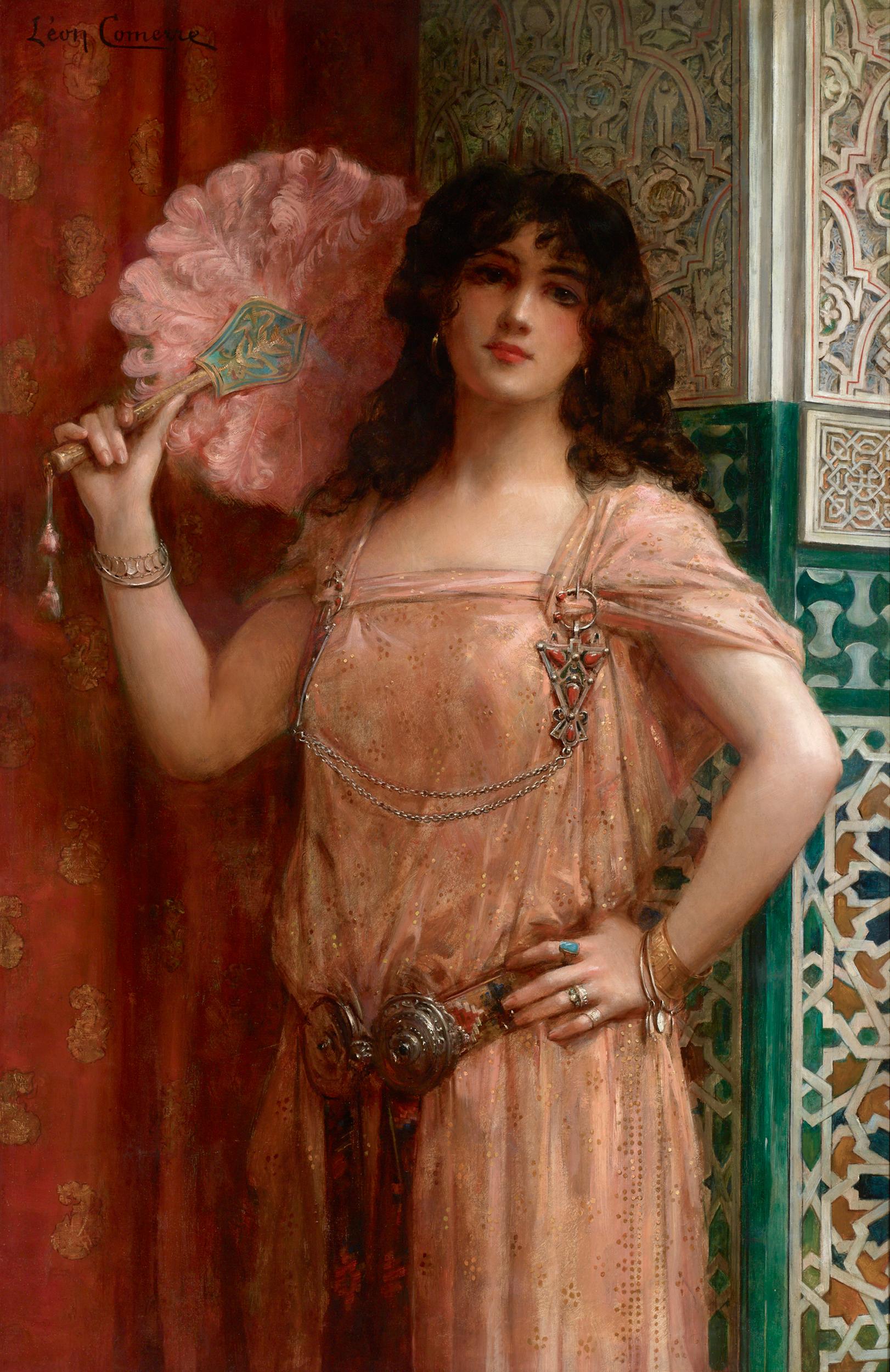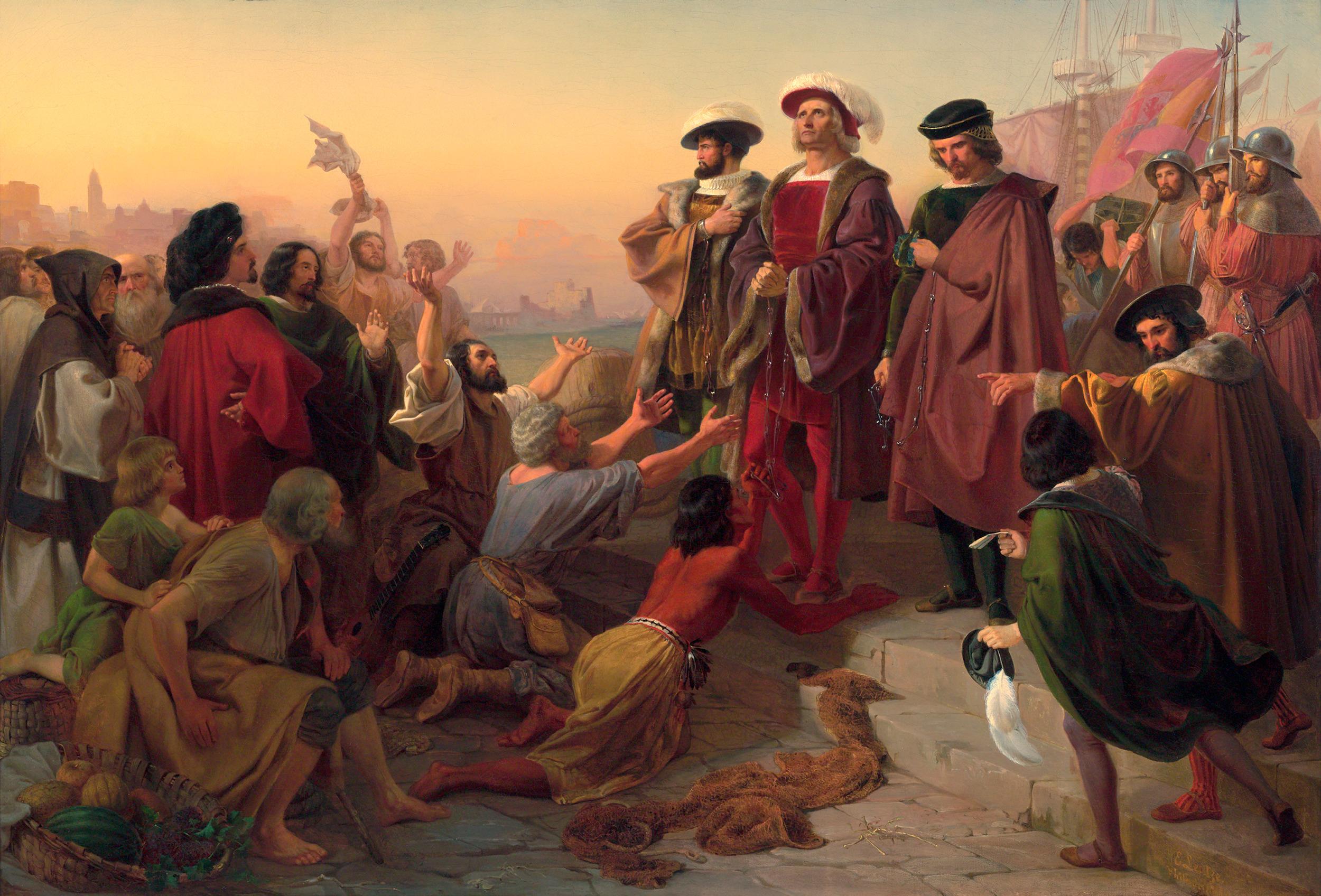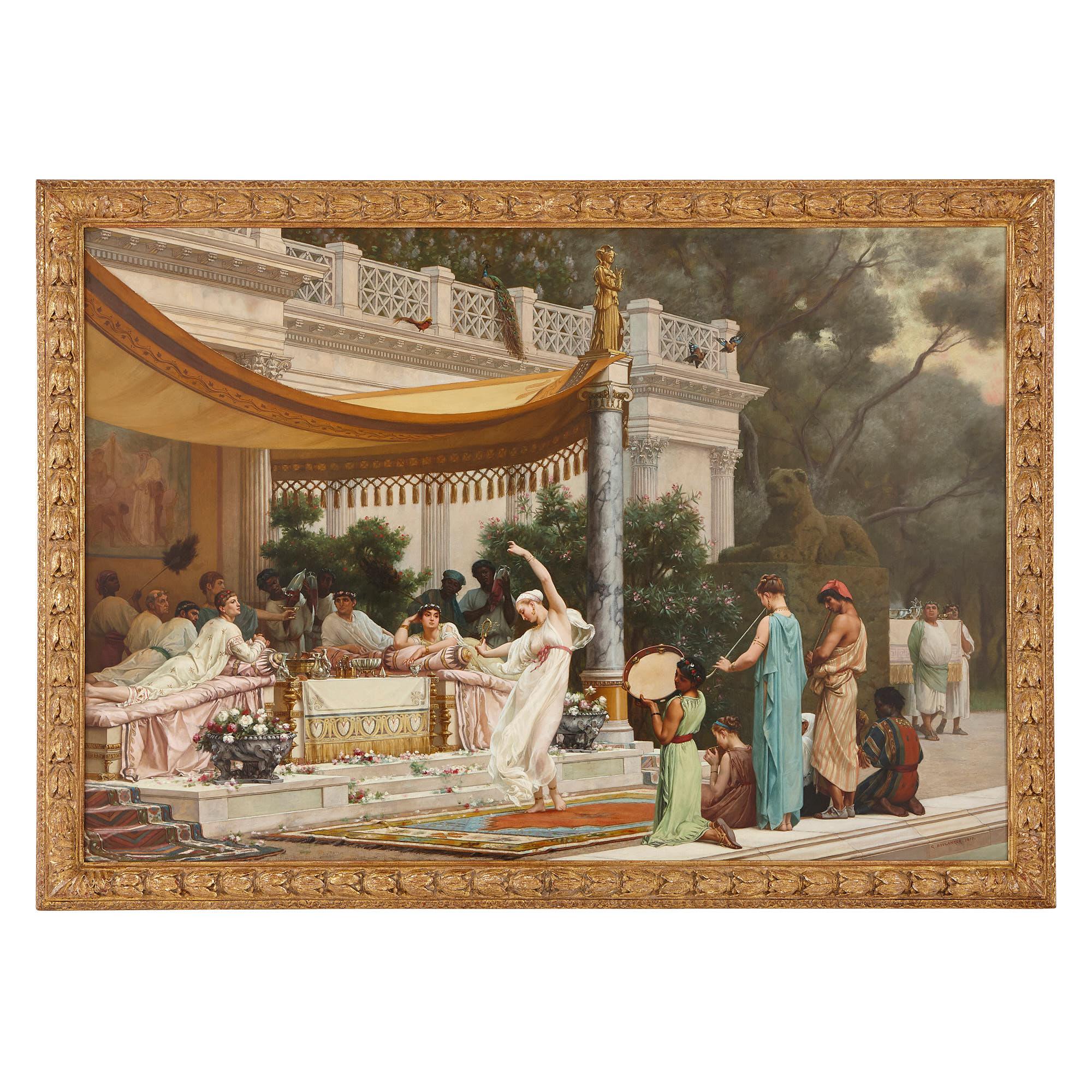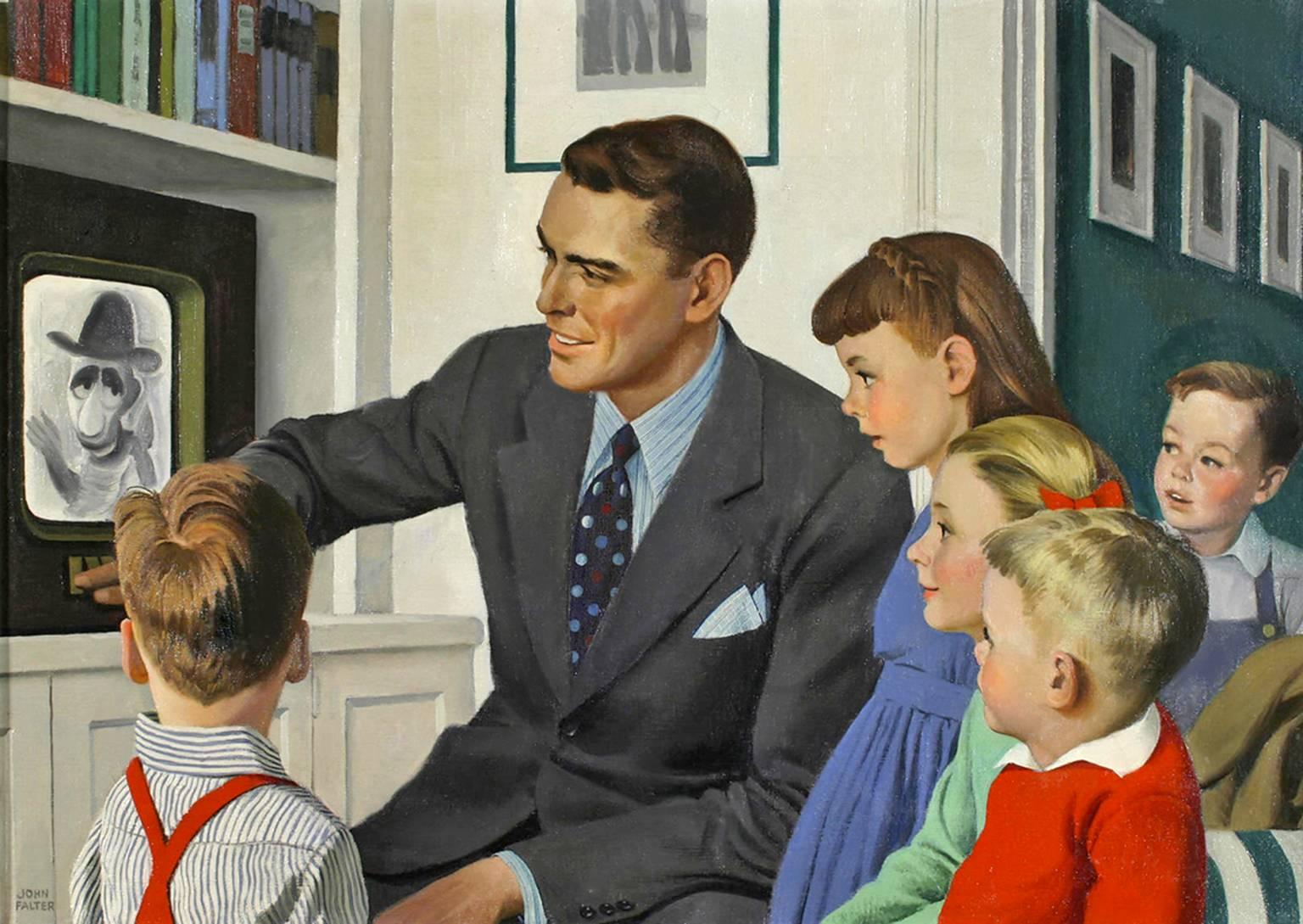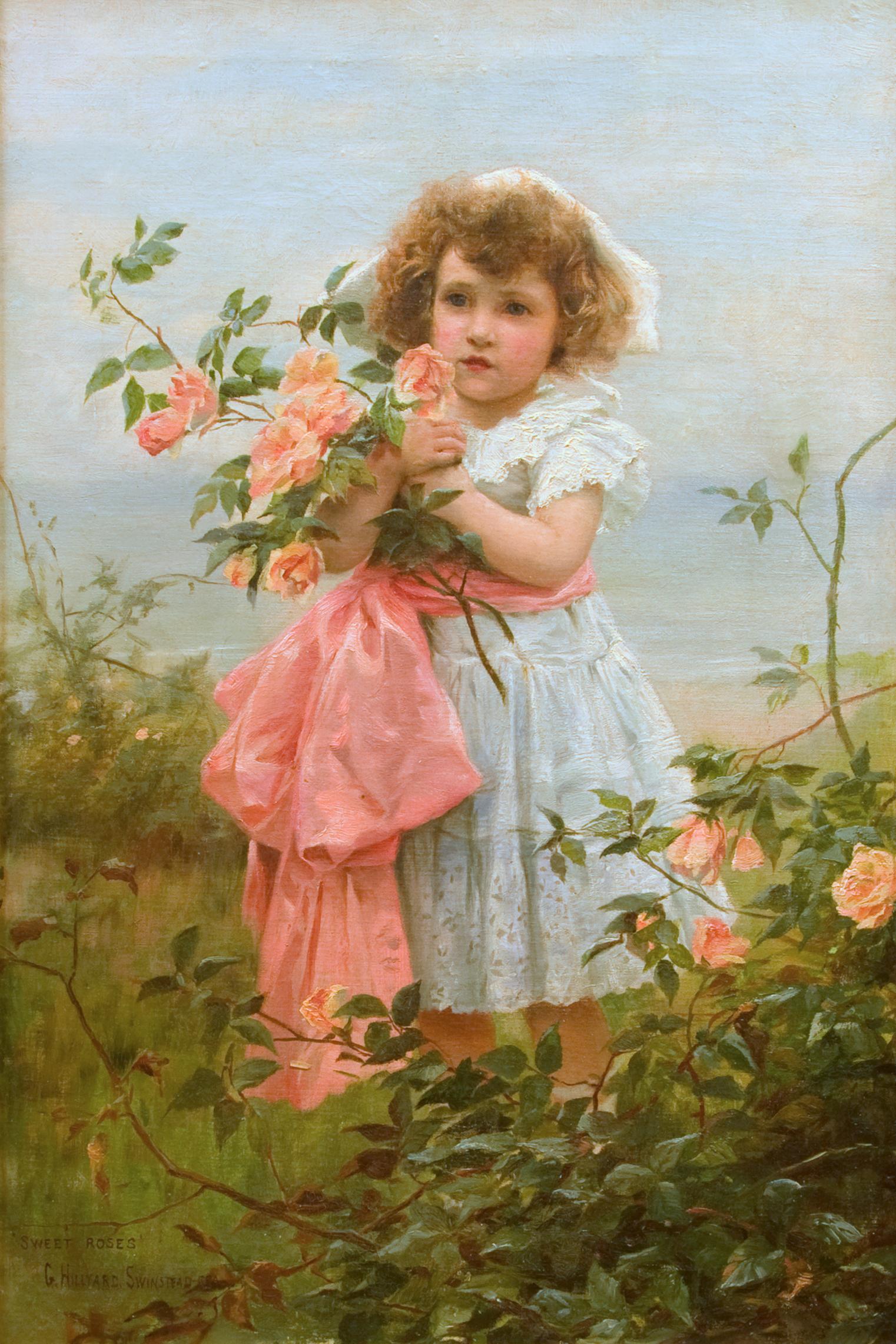Articles similaires à Première bataille entre les puritains et les amérindiens, huile sur toile 1874
Vous voulez plus d'images ou de vidéos ?
Demander au vendeur plus d'images ou de vidéos
Imogene Robinson MorrelPremière bataille entre les puritains et les amérindiens, huile sur toile 18741874
1874
À propos de cet article
Our painting represents a military scene — an event during the war between European settlers and Native Americans.
Oil on canvas, signed and dated at the bottom right :
Imogene Robinson Morrel- PARIS 1874
American School XIXth century
Imogene Robinson was born in Attleboro, Massachusetts, at the beginning of the 19th century. She studied art at the age of 16 in Newark New Jersey, then in New York City. In 1856, Robinson went to Europe for the first time. She studied under Adolf Schroeder and Wilhelm Camphausen in Düsseldorf, Germany.
Then, Europe called to her again. She went with a friend, Elizabeth Gardner. In July 1864, they arrived in Paris and made a living copying great works from the Louvre and Luxemburg museums for American patrons. The two artists were in close contact with the colony of American artists in Paris, but they likewise befriended French painters Meissonnier and Bouguereau. In 1869, Imogene Robinson married Colonel Abraham Morrell. In 1871, Gardner moved into her last place, 73 rue des Petits Champs and became neighbors with Bouguereau. Several years later, in 1895, she married him.
As long as we can follow her official path to the Salons of 1868 and 1869, her entrée as the first woman at the Academy Jullian in 1873, we observe that Robinson Morrell did not participate in the Parisian art demonstrations. She studied portraiture and landscapes under François–Louis Français (1814-1879), and took certain courses taught by Thomas Couture (1815-1879), the last historical painter of the second half of the 19th century. Couture received many students, most notably Americans including Hunt and Longfellow. It was during this period that Imogene Robinson Morrell began her great historical compositions and painted our version of the First battle between the puritans and the Native Americans.
In 1874, she left permanently for the U.S. and eventually settled down in Washington D.C. in 1877. While en route, she exhibited at the Mechanic’s Fair in Boston and then at the Philadelphia Centennial Expedition in 1876 where her contemporaries welcomed her enthusiastically. She won two medals there for her historical compositions: The First Battle between the Puritans and the Native Americans and Washington and his Staff Welcoming the Provision Train at Newburg. The local press glorified her moving art and her patriotism. We noted that her friend E.J. Gardner also exhibited two works there.
But her joyful years soon ended with her husband’s death in 1879. In 1886, the fire at the Knox warehouse destroyed her paintings and all the pieces destined to be bought by the government and shown at the Capitol. Only her portrait of General John A. Dix can be seen today. In 1887, the National Academy of Fine Arts in Washington, which she founded and which renowned artists and students enjoyed, went bankrupt. The end of her life was difficult. Having lost the fortune she entrusted to some unscrupulous businessmen, she survived thanks to the kindness of her friends. She died in a miserable family boarding house on November 22, 1908.
The day after Imogene Robinson Morrell’s death, the Washington Post published an article lamenting her miserable end and the dramatic events that drove her to it. Her career was remembered along with the great quality of her destroyed and forgotten works.
Found accidentally in France at the dawn of the third millennium, a replica of The First Battle between the Puritans and the Indians finally reconciled this academic painter with history. A unique testimony, this discovery has since allowed us to better imagine the original work’s scope and technical quality.
Thanks to this unexpected preservation of one of her masterpiece, Robinson Morrell can reclaim her place among the painters of her time. This work of rehabilitation, only just begun, is largely owed to her.
Excellent état
Has been cleaned
Original frame and canvas
Dimensions without frame Height: 104 cm / 41 inches Width: 128 cm / 50.5 inches
Dimensions with frame Height: 120 cm / 47 1/4 inches Width: 145 cm / 57 inches Depth: 6 cm / 2 1/4 inches
- Créateur:Imogene Robinson Morrel (1828 - 1908)
- Année de création:1874
- Dimensions:Hauteur : 104 cm (40,95 po)Largeur : 128 cm (50,4 po)Profondeur : 6 cm (2,37 po)
- Support:
- Mouvement et style:
- Période:
- État:
- Adresse de la galerie:Paris, FR
- Numéro de référence:
À propos du vendeur
5,0
Vendeur agréé
Ces vendeurs expérimentés font l'objet d'une évaluation complète par notre équipe d'experts.
Vendeur 1stDibs depuis 2019
8 ventes sur 1stDibs
- ExpéditionRecherche du devis...Expédition à partir de : Paris, France
- Politique des retoursCet article peut être retourné sous 14 jours à compter de la date de livraison.
Certaines parties de cette page ont été traduites automatiquement. 1stDibs ne garantit pas l'exactitude des traductions. L'anglais est la langue par défaut de ce site web.
Plus d'articles de ce vendeurTout afficher
- Enfants jouant dans le parc, huile sur toile signée Joseph Dierickx, datée de 1903Par Joseph DierickxPeinture de genre représentant une mère surveillant ses deux petites filles au parc. Huile sur toile signée en bas à droite Joseph Dierickx et datée 1903. Dierickx Joseph (1865-195...Catégorie
Début du 20ème siècle, Académique, Peintures - Figuratif
MatériauxToile
- Le cirque, la fête est là ! Huile sur panneau signée Patrick Franc et datée de 1962Le cirque, la fête est là ! Huile sur panneau signée en bas à gauche Patrick Franc et datée 1962 Dimensions : 50 x 65 cm (19.685 x 25.591 pouces) : 50 x 65 cm (19.685 x 25.591 pouces) Dimensions avec cadre : 56 x 71 x 1 cm (22.047 x 27.953 x 0.394 pouces) Dans son cadre d'origine Patrick Franc est un peintre marocain...Catégorie
années 1960, Contemporain, Peintures - Figuratif
MatériauxHuile
- Huile sur toile « Gallantry Scene in a Tavern » signée Rigot et datée de 1874Belle peinture représentant une scène de galanterie, un officier et une jeune femme assis sur une table de billard à l'intérieur d'une taverne. Signé en bas à droite Rigot et daté 1...Catégorie
années 1870, Académique, Peintures - Intérieurs
MatériauxToile
- Portrait d'un jeune garçon, huile sur toile signée Felix Bryk, vers 1910Joli portrait d'un jeune garçon debout sur un fauteuil. Huile sur toile signée Felix BRYK. École suédoise, vers 1900-1910 Portraitiste et ethnologue du ...Catégorie
Années 1910, Académique, Peintures - Portrait
MatériauxToile
- The Hunting with Hounds Huile sur toile d'Eugene Pechaubes circa 1935Par Eugene PechaubesHuile sur toile représentant une chasse. Signé en bas à droite E. Pechaubes. Eugène Pechaubes (1890-1967). École française du XXe siècle. Il peignait principalement des chevaux et ...Catégorie
Milieu du XXe siècle, Académique, Peintures - Animaux
MatériauxToile
- Fishermen By The Lake, huile sur toile, signée Dommersen, école néerlandaise, 1870Par Pieter Cornelis DommersenHuile sur toile représentant une scène de pêcheurs au bord d'un lac, paysage hollandais. Signé dans le coin inférieur gauche par Pieter Cornelis Dommersen. Peintre de marines et de...Catégorie
Fin du XIXe siècle, Académique, Peintures - Paysage
MatériauxHuile
Suggestions
- L''odalisque à l''éventail (The Odalisque with the Fan)Par Léon François ComerreLéon François Comerre 1850-1916 Français L'odalisque à l'éventail (L'Odalisque à l'éventail) Signé "Léon Comerre" (en haut à gauche) Huile sur toile Alliant l'éclat du costume et...Catégorie
Fin du XIXe siècle, Académique, Peintures - Portrait
MatériauxToile, Huile
- Retour de Colomb à Cadiz par Emanuel LeutzeEmanuel Leutze 1816-1868 Américain Retour de Colomb enchaîné à Cadix Signé E. Leutze / Philadelphie (en bas à droite) Huile sur toile Peint par l'artiste en 1842, ce chef-d'œuvre...Catégorie
XIXe siècle, Académique, Peintures - Figuratif
MatériauxHuile, Toile
- « Une répétition d'été à la Maison de Lucullus », grande peinture à l'huile de BoulangerPar Gustave Clarence Rodolphe BoulangerCe magnifique tableau a été créé en 1877 par le célèbre peintre français Gustave Clarence Rodolphe Boulanger. Boulanger a souvent produit des œuvres qui combinaient le style classiqu...Catégorie
Fin du XIXe siècle, Académique, Peintures - Figuratif
MatériauxToile, Huile
- Une dame pompéiennePar John William GodwardJohn William Godward 1861-1922 Britannique Une dame pompéienne Signé et daté "J.W. Godward 1904" (en bas à droite, partiellement couvert par le cadre) Huile sur toile John Willia...Catégorie
Début du 20ème siècle, Académique, Peintures - Portrait
MatériauxHuile, Toile
- Père et enfants devant la télévision - Milieu du siècle dernierPar John Philip FalterJohn Falter dispose les figures et les visages d'une manière qui rivalise avec la perfection de la composition des maîtres anciens. Et il donne l'impression que c'est facile. Les e...Catégorie
années 1950, Académique, Peintures - Figuratif
MatériauxHuile, Toile
- Roses sucréesSigné et titré en bas à gaucheCatégorie
années 1870, Académique, Peintures - Figuratif
MatériauxToile, Huile
